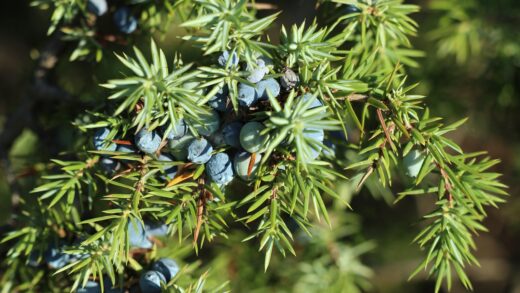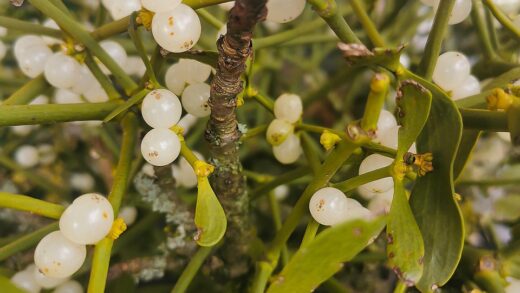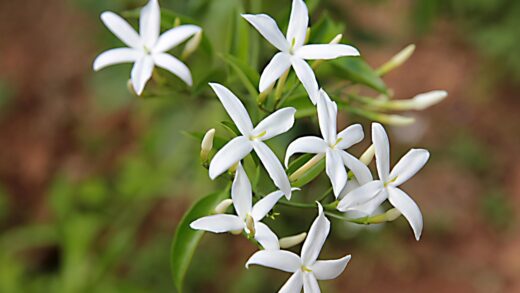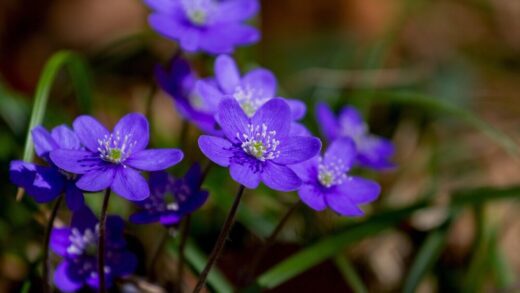Providing a balanced and timely diet is fundamental to unlocking the full potential of regal pelargoniums, directly influencing their foliar health, vigor, and, most importantly, their capacity to produce a profusion of their famously large and intricate flowers. These plants are moderately heavy feeders during their active growth phase, yet they are also sensitive to over-fertilization, which can lead to root burn and inhibit blooming. Therefore, a carefully considered feeding strategy is not about providing more, but about providing the right nutrients at the right time. Understanding the role of key macronutrients and the plant’s seasonal needs will allow you to move beyond simple survival and cultivate a truly spectacular specimen.
The nutritional needs of a regal pelargonium can be broken down by the three primary macronutrients found in most commercial fertilizers: Nitrogen (N), Phosphorus (P), and Potassium (K). Nitrogen is crucial for promoting lush, green, vegetative growth, including the development of leaves and stems. Phosphorus plays a vital role in root development and is essential for the processes of energy transfer within the plant, which are critical for flowering. Potassium, often referred to as the „quality“ nutrient, contributes to overall plant health, disease resistance, and is particularly important for promoting abundant, high-quality blooms.
During the main growing season of spring and early summer, a balanced fertilizer is generally recommended. However, to specifically encourage flowering, it is often beneficial to switch to a „bloom booster“ formula once the plant is well-established. These fertilizers typically have a higher proportion of potassium and phosphorus compared to nitrogen. A high-nitrogen fertilizer, while producing a large, leafy plant, will often do so at the expense of flowers. The goal is to find a balance that supports healthy foliage as the factory for the plant’s energy, while prioritizing the nutrients that fuel the production of its stunning blossoms.
The physical form and application of the fertilizer also matter. Liquid or water-soluble fertilizers are generally the best choice for container-grown regal pelargoniums. They provide nutrients in a readily available form that the plant can absorb quickly. These should be applied every two to four weeks during the active growing season, always diluted according to the manufacturer’s instructions. It is crucial to apply the fertilizer solution to soil that is already moist; fertilizing a bone-dry plant can severely damage the roots, a phenomenon known as fertilizer burn. Therefore, it is a good practice to water the plant normally first, and then apply the fertilizer solution afterwards.
A common mistake to avoid is the belief that more fertilizer will result in more flowers. Regal pelargoniums are sensitive, and an excess of fertilizer salts can build up in the soil, damaging the fine root hairs and impairing the plant’s ability to take up both water and nutrients. This can lead to symptoms such as leaf-edge browning, stunted growth, and a general decline in health. It is always better to err on the side of caution and slightly under-feed rather than over-feed. If you are unsure, using a half-strength solution is a safe and effective approach.
Weitere Artikel zu diesem Thema
A seasonal approach to fertilization
A successful feeding regimen for regal pelargoniums is one that adapts to the plant’s natural life cycle throughout the year. Fertilization should be synchronized with the plant’s periods of active growth and rest. In the early spring, as temperatures rise and new shoots begin to appear, you can commence feeding. Start with a balanced liquid fertilizer diluted to half-strength. As the plant’s growth becomes more vigorous and it enters its main growth phase, you can increase the feeding frequency to every two to three weeks and use the fertilizer at its full recommended strength. This initial feeding provides the essential nutrients for building a strong foliar framework.
As spring progresses and the plant begins to form flower buds, it is an opportune time to switch to a high-potassium fertilizer, such as a tomato feed or a specially formulated „bloom booster.“ This shift in nutrient balance signals to the plant to direct its energy towards producing large, vibrant, and numerous flowers rather than excessive leafy growth. Continue with this high-potassium feed throughout the main flowering season, which typically lasts from late spring into early summer. Consistent feeding during this peak period is crucial for sustaining the energy-intensive process of blooming.
Once the main flowering display has finished in mid-to-late summer, it is time to begin tapering off your fertilization schedule. The plant’s nutritional needs decrease as its growth rate slows. You can reduce the frequency of feeding to once a month and perhaps switch back to a more balanced formula, or simply continue with a half-strength bloom feed. The goal is to support the plant as it recovers from flowering and builds reserves, without encouraging a late flush of soft, weak growth that would be vulnerable to pests and diseases as autumn approaches.
By mid-autumn, all fertilization should cease completely. As the plant enters its winter dormancy, its metabolic processes slow down dramatically, and it stops actively taking up nutrients. Continuing to fertilize a dormant plant is not only wasteful but also dangerous, as the unused fertilizer salts will accumulate in the soil and can cause severe root damage. The plant needs this period of rest, free from the stimulation of fertilizers, to conserve energy and prepare for the following spring’s growth cycle. No feeding should occur throughout the entire winter period until growth resumes in the spring.
Weitere Artikel zu diesem Thema
The role of micronutrients
While the N-P-K ratio is of primary importance, a complete and balanced diet for your regal pelargonium must also include a range of essential micronutrients. These are elements that the plant needs in much smaller quantities, but their absence can lead to specific health problems and deficiencies. Important micronutrients include magnesium, calcium, iron, manganese, and boron. A high-quality, complete fertilizer will typically contain these trace elements, so it is worth checking the product label to ensure you are providing a full nutritional profile.
Magnesium, for instance, is a central component of the chlorophyll molecule, making it essential for photosynthesis. A magnesium deficiency often manifests as yellowing between the veins on the older, lower leaves of the plant, a condition known as interveinal chlorosis. If you observe this symptom and are already using a balanced feed, you may need to supplement with a specific magnesium source. A simple and effective remedy is to occasionally water the plant with a dilute solution of Epsom salts (magnesium sulfate), using about one teaspoon per four liters of water.
Iron is another crucial micronutrient, and its deficiency also causes chlorosis, but it typically appears first on the new, upper leaves. An iron deficiency is often not due to a lack of iron in the soil, but rather the soil’s pH being too high (too alkaline), which „locks up“ the iron and makes it unavailable to the plant. This is another reason why avoiding the long-term buildup of mineral salts from hard tap water is important. Using a fertilizer formulated for acid-loving plants or one containing chelated iron can help to resolve this issue.
Ultimately, the easiest way to ensure your plant receives all the necessary micronutrients is to use a reputable, well-formulated complete fertilizer and to maintain a healthy soil environment. Regular repotting with fresh potting mix every one to two years also helps to replenish the supply of these essential trace elements. By paying attention to the complete nutritional picture, beyond just the N-P-K numbers, you provide your regal pelargonium with all the building blocks it needs for robust health, strong disease resistance, and a truly magnificent floral display.
Organic vs. synthetic fertilizers
When choosing a fertilizer for your regal pelargonium, you will encounter two main categories: organic and synthetic. Synthetic fertilizers are manufactured from chemical compounds and are designed to provide nutrients in a form that is immediately available to the plant. They are fast-acting and the nutrient content is precise and consistent. Common examples include water-soluble powders and concentrated liquids. Their main advantage is the rapid delivery of nutrients, which can be beneficial for quickly correcting a deficiency or providing a boost during peak growth.
Organic fertilizers, on the other hand, are derived from natural sources such as plant matter (like seaweed extract or alfalfa meal) or animal by-products (like bone meal or fish emulsion). These materials need to be broken down by microorganisms in the soil before their nutrients become available to the plant. This means they are generally more slow-release in nature, providing a gentler, more sustained feeding over a longer period. They also have the added benefit of improving the soil structure and feeding the beneficial microbial life within the potting medium.
The choice between organic and synthetic options often comes down to personal preference and gardening philosophy. For container-grown regal pelargoniums, synthetic water-soluble fertilizers are very popular and effective due to the control they offer. The grower can deliver a precise dose of nutrients exactly when the plant needs it, which is ideal for managing the switch from a balanced feed to a bloom-booster formula. However, care must be taken to avoid over-application and the potential for salt buildup in the soil.
An integrated approach can also be highly effective. You could, for example, incorporate a slow-release organic fertilizer like bone meal into your potting mix when you plant or repot. This will provide a steady, baseline level of nutrients over several months. You can then supplement this with a liquid synthetic fertilizer during the peak flowering season to provide that extra, readily available boost needed for heavy blooming. This combination gives the plant the best of both worlds: long-term soil health and a readily available source of nutrition during times of high demand.
Diagnosing nutrient imbalances
Learning to recognize the signs of nutrient deficiencies or excesses is a valuable skill for any gardener. As mentioned, yellowing leaves are a common symptom. If the yellowing (chlorosis) is primarily on the older, lower leaves, it often points to a deficiency in a mobile nutrient like nitrogen or magnesium, as the plant will move these nutrients from old leaves to support new growth. If the yellowing appears first on the young, upper leaves, it is more likely a deficiency in an immobile nutrient like iron or calcium, which the plant cannot relocate from older tissues.
Stunted or weak growth is a general sign that the plant may be lacking sufficient overall nutrition. If your regal pelargonium is producing small leaves, has thin, spindly stems, and a general lack of vigor despite proper watering and light, it is likely in need of more regular feeding. Conversely, a plant that produces an overabundance of lush, dark green foliage but very few or no flowers is often receiving too much nitrogen. This is a clear signal to switch to a fertilizer with a lower nitrogen content and higher levels of phosphorus and potassium.
The physical appearance of the leaves can offer further clues. A phosphorus deficiency, though less common, can sometimes cause the leaves to take on a dull, slightly purplish hue. A potassium deficiency might manifest as yellowing or browning along the edges or margins of the leaves, starting with the older ones. While precise diagnosis can be complex, these general indicators can help you to make educated adjustments to your feeding program.
The best course of action when you suspect a nutrient issue is to first review your current fertilization practices. Are you feeding regularly during the growing season? Are you using a balanced, complete fertilizer? If you have been fertilizing consistently, the issue might be related to salt buildup or pH problems. In this case, flushing the soil thoroughly with clean, pH-neutral water can help to reset the balance. Afterwards, you can resume a regular, balanced feeding schedule. This systematic approach will often resolve the most common nutrient-related problems.



















